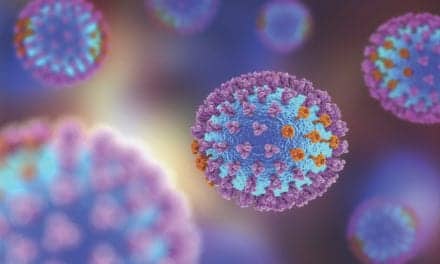Critical milestone reached in response to the Wuhan coronavirus outbreak
FDA has issued an emergency use authorization (EUA) to permit use of the 2019-nCoV real-time RT-PCR diagnostic panel developed by the Centers for Disease Control and Prevention (CDC).1 Use of the test was previously limited to use at CDC laboratories; the agency’s authorization allows use of the test at any CDC-qualified lab across the country.
“Since this outbreak first emerged, we’ve been working closely with our partners across the US government and around the globe to expedite the development and availability of critical medical products to help end this outbreak as quickly as possible. This continues to be an evolving situation and the ability to distribute this diagnostic test to qualified labs is a critical step forward in protecting the public health,” says FDA Commissioner Stephen M. Hahn, MD. “Our collaboration with CDC has been vital to rapidly developing and facilitating access to this diagnostic test. FDA remains deeply committed to utilizing our regulatory tools and leveraging our technical and scientific expertise to advance the availability of critical medical products to respond to this outbreak in the most expeditious, safe, and effective manner possible.”
First identified in Wuhan, China, in December 2019, the 2019-novel coronavirus (2019-nCoV) is a new type of coronavirus that can cause severe respiratory illness in humans. Most patients with confirmed 2019-nCoV infection have developed fever and/or symptoms of acute respiratory illness (eg, cough, difficulty breathing). However, limited information is currently available to characterize the full spectrum of clinical illness associated with 2019-nCoV infection. To date, most reported cases of 2019-nCoV infection outside of China have been linked to residence in or travel to Wuhan, China. At this time, federal health officials continue to believe that the threat to the general American population from this virus is relatively low.
Under the EUA, use of the 2019-nCoV real-time RT-PCR diagnostic panel is authorized for patients who meet CDC criteria for 2019-nCoV testing. Testing is limited to qualified laboratories designated by CDC and, in the United States, those certified to perform high-complexity tests. The diagnostic is a reverse transcriptase polymerase chain reaction (PCR) test that provides presumptive detection of 2019-nCoV from respiratory secretions, such as nasal or oral swabs. A positive test result indicates likely infection with 2019-nCoV; infected patients should work with their healthcare provider to manage their symptoms and determine how best to protect the people around them. Negative results do not preclude 2019-nCoV infection and should not be used as the sole basis for treatment or other patient management decisions. Negative results must be combined with clinical observations, patient history, and epidemiological information.
Based on scientific data, FDA can issue an EUA to permit the use of certain medical products that may be effective in diagnosing, treating, or preventing a disease or condition, when the secretary of Health and Human Services (HHS) has determined that there is a public health emergency or a significant potential for a public health emergency that has a significant potential to affect national security or the health and security of US citizens, and has issued a declaration that such circumstances justify the medical products’ emergency use.
On January 31, HHS Secretary Alex M. Azar II, JD, declared a public health emergency, recognizing the potential threat that 2019-nCoV poses and reiterating the government’s dedication to leverage all available resources to help prevent, mitigate, and respond to the threat. As there are no commercially available diagnostic tests cleared or approved by FDA for the detection of 2019-nCoV, it was determined that an EUA would be crucial for ensuring timely access to diagnostics. Accordingly, the HHS Secretary issued the necessary EUA determination and declaration, and FDA issued its EUA in response to a request from CDC. The action is the result of close collaboration among FDA, CDC, and the Centers for Medicare and Medicaid Services, which provides oversight for US laboratories, to prioritize the efficient development and implementation of critical medical products in response to emerging infectious disease outbreaks, such as novel coronavirus.
On January 27, FDA outlined its approach to expediting the development and availability of critical medical products to prevent, diagnose, and treat 2019-nCoV using all applicable regulatory authorities to respond to the outbreak.2 The agency remains committed to working with developers, international partners, and the US government to help support this public health response. FDA is also working with other 2019-nCoV diagnostic developers to help accelerate development programs and requests for EUAs; several test developers have already requested and received the EUA template for the Wuhan coronavirus outbreak.
1. Novel coronavirus (2019-nCoV) EUA information [online]. Silver Spring, Md: FDA, 2019. Available at: www.fda.gov/emergency-preparedness-and-response/mcm-legal-regulatory-and-policy-framework/emergency-use-authorization#2019-ncov. Accessed February 7, 2019.
2. FDA announces key actions to advance development of novel coronavirus medical countermeasures [online]. Silver Spring, Md: FDA, 2019. Available at: www.fda.gov/news-events/press-announcements/fda-announces-key-actions-advance-development-novel-coronavirus-medical-countermeasures. Accessed February 7, 2019.
Featured image: An illustration created by the Centers for Disease Control and Prevention (CDC) reveals the ultrastructural morphology exhibited by the 2019 novel coronavirus (2019-nCoV). The spikes that adorn the outer surface of the virus impart the look of a corona surrounding the virion, when viewed electron microscopically. The 2019-nCoV virus was identified as the cause of an outbreak of respiratory illness first detected in Wuhan, China, in December 2019. Illustration courtesy CDC Public Health Image Library (ID 23311).







